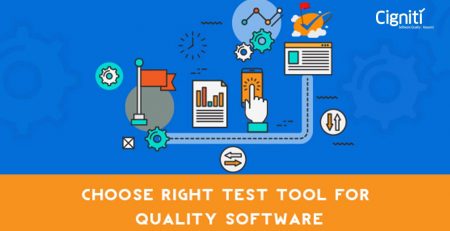Accelerate your Test lifecycle with these Automation tools
Test automation works to accelerate your test life cycle, and enable you to increase test coverage. Although there are many test automation tools in the market, some tools have proven to be more effective in most enterprise environments, we will discuss about them in this blog post.
Enterprise Level Test Automation with HP QTP/UFT
HP QTP/UFT is one of the prominent tools and enables end to end Enterprise level test automation, with its huge support for enterprise level applications such as SAP, AS400, Web, Mobile and various other HRM, CRM applications. What could you consider when deciding on choosing HP QTP/UFT:
Pros:
- Ease of creating test scripts with VBScript as the scripting language driving the tests
- Add-ins and support for many technologies on Desktop, Web and Mobile
- Best of class Object Management and Object Recognition mechanism
- Integration to ALM tools like HP ALM
- REST, SOA and API automation integrated into HP UFT to enable true end to end test automation for Enterprise
Cons:
- High cost of license, might not be an appropriate choice when the technology the applications are built on is limited
- Windows only support, works only with applications running on Windows OS
Functional and Web Service automation using SmartBear TestComplete
TestComplete by Smartbear is another great testing tool in the arena.
Pros
- The tool supports integration of SoapUI NG, ServiceV, and SoapUI which allows you to go beyond the user interface and automate tests that invoke APIs or other Web services. This also enables shorter and faster release cycles.
- TestComplete uses Real Scripting languages that enable easier coding and developing. Script files are stored as plain text; this lets you put the script under source control easily.
- It helps save time on Regression tests. When you do a project on TestComplete it can be added in final builder. After you have finalized your functional test cases, you can pass them on to the Release Engineer. Then after you get the new build, you get the testlog together which really cuts down on time.
- TestComplete’s customizable event handling and ‘local variables’ feature is one of its undeniable benefits. This and the ‘test suite’ feature makes data driven testing a real pleasure.
- Integrate into CI servers such as Jenkins and TFS
Cons
- Limitation on kind of frameworks that can be developed due to the project structure
Drive the Web and Mobile tests using Selenium + Appium
Selenium the open source Web application test automation tool has become very famous, and its extension to support mobile automation utilizing Appium enables testers now to test Web and Mobile with the same API. Here is when you might choose Selenium for your automation needs:
Pros
- Execute tests in parallel on multiple OS, browser combinations using Selenium Grid
- Extend your tests to run on Mobile browsers
- Automate mobile applications using the Selenium API and Appium
- Supports all the popular browsers and versions
- Integrate with dev and CI environment seamlessly
Cons
- Steeper learning curve as it uses programming languages such as Java, C#, Ruby etc
- No in-built mechanism for Object Management and object identification(with a spying tool)
Telerik Test Studio
Telerik Test Studio is an all-in-one Windows based software testing tool.
Pros
- It is considered to be one of the easiest testing tools you can come across. The most complex functional, load, and performance testing can be done with just a few clicks with the use of this tool.
- Telerik Test Studio helps you with functional testing, as it supports test automation for web and desktop applications. In the mobile arena it covers iOS too.
- It can support multiple data stores like flat file, in build table, database, excel etc.
- Any action performed is page driven and are tied to specific elements in the UI. This means it isn’t driven by mouse movements or keyboard navigation, which makes this tool more resilient than most.
Cons
- When it comes to in-depth custom coded automation frameworks and projects, it needs quite a bit of effort to get it set up due to high level of abstraction at code level
Not sure about the best approach to take and which tool to select for your needs? Get in touch and we can guide you through the test automation initiatives with our IP led automation services.
Join Cigniti and SmartBear Co-Webinar on API Testing on May 21st 2015, 11:00 AM – 12:00 PM. Register now!





Comment (1)
Using Selenium as the Functional Test Automation Tool, you can reduce the cost incurred for licensing using QTP. QTP is one of the most widely used automation testing tools in the market today with over 60% market share. Due to this reason, skilled QTP professionals are always in demand. The efforts involved in scripting for Selenium increased by about 15 % than QTP in the initial stages. Once all the solutions are in place the efforts of automation using Selenium and QTP were almost the same.
If your audience is also interested in Selenium Testing, they can take a look here: Selenium Training